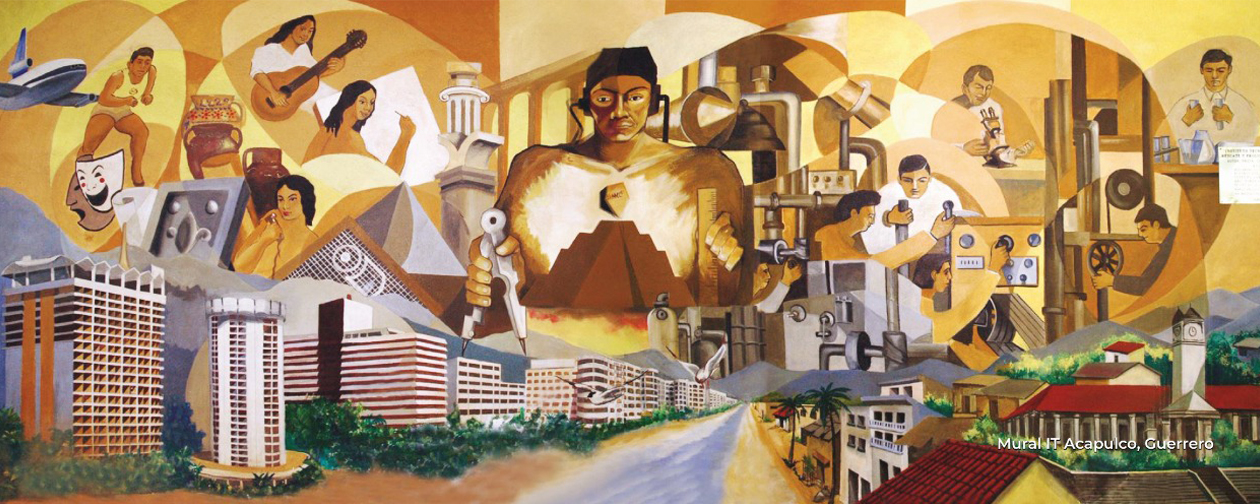
Please use this identifier to cite or link to this item:
https://rinacional.tecnm.mx/jspui/handle/TecNM/7255| Title: | DESARROLLO DE UN ALIMENTO FUNCIONAL A PARTIR DE LA PULPA DE JOBO (Spondias Mombin L.) |
| Authors: | PADILLA GARCÍA, GISELA FERNANDA |
| Issue Date: | 2024-02-28 |
| Publisher: | Tecnológico Nacional de México |
| metadata.dc.publisher.tecnm: | Instituto Tecnológico Superior de Tierra Blanca |
| Description: | La caracterización fisicoquímica (pH, acidez titulable, color, humedad, compuestos fenólicos) de la pulpa de jobo, mostró un alto contenido de compuestos fenólicos (2860±450.33 mg EAG/100 g.), Posteriormente de los métodos utilizados para la conservación de la pulpa, se seleccionó el de terminología T3, que implica: baño ultrasónico y secado por estufa. Para el desarrollo del alimento funcional (gomitas), se estableció la formulación la cual es a base de grenetina, pectina, glucosa y ácido cítrico. Teniendo un control y dos formulaciones en la cual se añadieron 0.3 y 0.6 g de pulpa de jobo procesada (T3) respectivamente. Obteniendo los siguientes resultados de la caracterización (color, compuestos fenólicos, actividad de agua, humedad) de las gomitas. En la que presentaron diferencias significativas en el pH, entre la muestra control y las formulaciones (F1 y F2) presentando un pH de 3.33, 3.42 y 3.44 respectivamente. En el parámetro de ΔE* del análisis de color presentó diferencias significativas respecto a la F1 y el control, esto debido a que b* (9.41±0.95) presentó mayor coloración amarilla con una menor luminosidad (15.39±0.75), viéndose influenciado en ambos parámetros la cantidad de pulpa añadida. Además, la F2 presentó una mejor conservación de los compuestos fenólicos en un periodo de 6 meses. Con respecto a la actividad de agua no presentaron diferencias, sin embargo, en la %humedad la F2 comparado con el control y F1, si presentaron diferencias significativas en la muestra control y la F1, de acuerdo a Tobias, et al., 2016, esto debe atribuirse a la cantidad de agua que se puede atrapar entre las fibras solubles de la pulpa. En el parámetro de perfil de textura la F2 es la que no presenta diferencias significativas con el control y F1, pero la F1 si presenta diferencias significativas con la muestra control. Las diferencias presentadas de estos valores se ven influenciadas por la red formada de hidrocoloides con respecto a la cantidad añadida de pulpa procesada en la formulación. Además, se observó que los factores que influyen en la degradación de los compuestos fenólicos en las gomitas es la luz, temperaturas bajas, oxígeno. Finalmente, el análisis microbiológico indicó que el producto está libre de microorganismos, por lo tanto, es apto para su consumo. XII ABSTRAC The physicochemical characterization (pH, titratable acidity, color, humidity, phenolic compounds) of the jobo pulp was performed, presented a high content of phenolic compounds (2860±450.33 mg EAG/100 g.). Subsequently from the methods used for the preservation of the pulp, the terminology T3, was selected, which involves: ultrasonic bath and dring by stove. For the development of functional food (gummies), the formulation was established which is base on grenetin, pectin, glucosa and citric acid. Having a control and two formulations in which 0.3 and 0.6 g of processed jobo pulp (T3) were added respectively. Obtaining the following results of the caracterization (color, phenolic compounds, water activity, humidity) of the gummies. In which they presented significant differences in pH, between the control sample and the formulations (F1 and F2), presenting a pH of 3.33, 3.42 and 3.44 respectively. In the ΔE* parameter of the color analysis, there were significant differences with respect to F1 and control, due to the fact that b* (9.41±0.95) presented a greater yellow coloration with a lower luminosity (15.39±0.75), the amount of pulp added being. Influenced in both parameters. In addition, F2 showed better conservation of phenolic compounds over a perod of 6 months. With respect to water activity, there were no differences, however, in the % humidity, F2 compared to control and F1, if they showed significant differences in the control sample and F1, according to Tobias, et al., 2016, this should be attributed to the amount of water that can be trapped between the soluble fibers of the pulp. In the textura profile parameter, F2 does not present significant differences whit the control and F1, but F1 does show significant differences with the control sample. The differences presented of these values are influenced by the network formed of hydrocolloids with respect to the added amount of pulp processed in the formulation. In addition, it was observed that the factors influencing the degradation of phenolic compounds in gummies are ligth, low temperaturas, oxygen. Finally, the microbiological analysis indicated that the producto is free of microorganisms, therefore, it is suitable for consumption. |
| metadata.dc.type: | info:eu-repo/semantics/masterThesis |
| Appears in Collections: | INSTITUTO TECNOLOGICO SUPERIOR DE TIERRA BLANCA |
Files in This Item:
| File | Description | Size | Format | |
|---|---|---|---|---|
| CESIÓN DE DERECHOS GISELA FERNANDA PADILLA GARCÍA.pdf | CESIÓN DE DERECHOS | 93.61 kB | Adobe PDF | View/Open |
| GISELA FERNANDA PADILLA GARCÍA.pdf | TESIS | 1.58 MB | Adobe PDF | View/Open |
This item is protected by original copyright |
This item is licensed under a Creative Commons License





